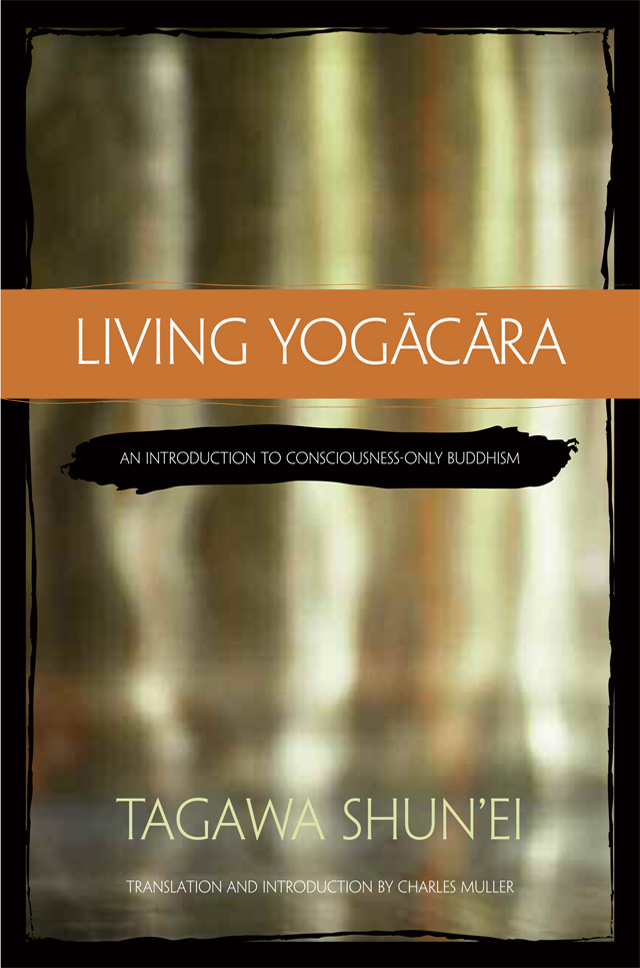
Martin Goodson
Living Yogacara by Tagawa Shun’ei
Book Review by Martin Goodson
The Yogacara school demystifies many aspects of Zen Buddhism that are often left unsaid. Though written from the perspective of the Hossō tradition, this title is still very useful for Zen practitioners.
 ©
©
The foundations of what became known as the Mahayana development are obscure and uncertain.
Unlike Martin Luther nailing his 95 theses against the Catholic Church’s practice of indulgences to the door of a church in Wittenberg in 1517, we have no single point in time that indicates the start of a ‘Reformation’ in Buddhism. Change in Buddhism is more often due to extended dialectics mirrored by sutras compiled over decades or even centuries.
It is sometimes stated that Mahayana Buddhism has two great pinnacles. The first is Mādhyamaka, who greatest exponent is the great 2nd century sage Nagarjuna. His teaching of sunyata translated into English as ‘emptiness’ is perhaps better known as a central teaching of the Mahayana. But humans have a tendency always to push an idea to an extreme. Even though the Buddha declared in his parable of the raft that his teachings are for ‘crossing over with and not for seizing hold of’, later exponents of Mādhyamaka tended towards a nihilism that threatened to make all teachings obsolete. This threat was countered by the founders of what became known as Yogacara, literally the ‘yoga-practice’ school. This is the second pinnacle of Mahayana.
Yogacara, also known as the ‘Mind-only’ or ‘Consciousness-only’ school of Buddhism, enters the historical record sometime in the 4th century, its founder being Asanga who, it is said, received these teachings from the future Buddha Maitreya who sits in the Tushita heaven awaiting his final rebirth. Asanga’s half brother happened to be Vasubandhu who compiled an Abhidhamma used by the Sautrantika school and still used by Tibetan and Far East Tantric schools, prior to his conversion to Mahayana by his half-brother. Vasubandhu went on to help Asanga promulgate the Yogacara teachings.
The teachings of the Yogacara answer the question created by the Buddha’s own teaching of ‘No-I’ (anatman). How is it that if the self is a delusion there exists in people such a sense of continuity from day-to-day, week-to-week and year-to-year? Yes, there is change over time but traits, tendencies and characteristics often persist over a lifetime; how is this if there is not a single entity that is not ‘static’ and resilient to change?
The Yogacara answer to this question is the alaya or ‘store-consciousness’, a repository of karmic seeds awaiting the time for their fruition and creating the psycho-physical organism of a being. These seeds gather together creating matrices of like-to-like which produce areas of stability in the personality. This ‘store’ is not the only innovation in the Buddhist theory of Mind that Yogacara posits. They also created what is known as the 7th consciousness - manas [1]. Manas is the reflective function of Mind that gazes upon the alaya and mistakes itself as something distinct from the action of the seed store, a self in other words. It is this arrangement that is the delusion of ‘I’ in Yogacara theory.
This school was not without its differences, as there were disputes about some of the details. For example, does each being have their own alaya or is there one alaya that we all share? Vasubandhu opted for the former whereas the Zen school went for the latter.
This major innovation, in the theory of mind, forms the central topic of the book Living Buddhism by Tagawa Shun’ei, the abbot of Kōfukuji monastery in Nara, Japan, which is the headquarters of the Hossō school.
The Hossō school is one of the surviving descendants of the original Yogacara school, which no longer exists in its Indian form. So, he is well placed to take on the task of translating these teachings of high psychological sophistication into the realm of everyday experience. This book provides a necessary bridge between what reads as a rather abstract, if profound, philosophy and a practical path of Buddhist liberation.
As is to be expected from a living tradition there has been further innovation since the early days of Yogacara’s inception and the author takes us through them, showing their necessity for understanding and walking the Buddha’s path in this tradition.
Is it necessary for a Zen student to understand these teachings in order to train in Zen? Probably not. However, I think there are two important reasons why Zen students here in the West should make the effort to understand how these teachings impact on practice. The first reason is that Yogacara and scriptures such as the Lankavatara Sutra, which expounds on this teaching, has strong historical associations with the Chan/Zen schools. According to legend it was the Lankavatara sutra that the First Patriarch of Zen, Bodhidharma, brought with him from India to China. The other is that many Western Zen students partake in an ‘oven-ready’ version of Zen that takes for granted a Buddhist world-view which is part and parcel of the culture and day-to-day religiosity of lay life. This does not exist in the West and so we must work harder to delve into and understand this world view if we are to make it our own and thus increase the likelihood of Buddhism, and our Zen school, putting down good roots for future generations.
…
[1] The first six consciousness are those outlined in the teachings of the Eighteen Dhatus in early Buddhism namely: visual, auditory, tactile, gustatory, olfactory & cognitive. Manas is the 7th with the alaya being the 8th consciousness.
…
(Living Yogacara by Tagawa Shun’ei; tr. & Introduction Charles Muller; pub. Wisdom Publications Boston 2009)




